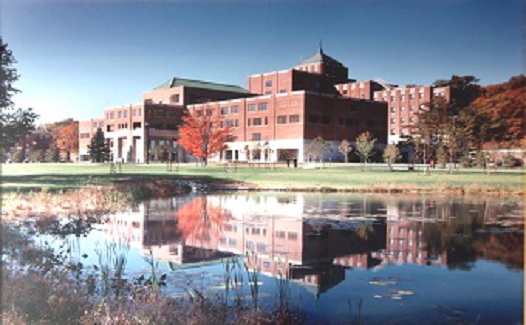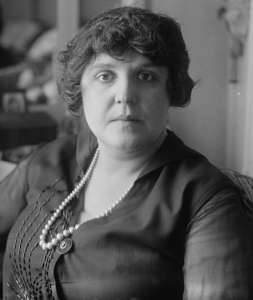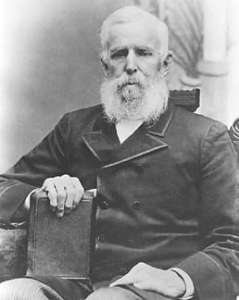THE BEST VIEW – School’s in: those smilin’ faces
/0 Comments/in The Best View/by Norma Best Boucher by Norma Best Boucher
by Norma Best Boucher
At first, I was embarrassed when I couldn’t remember this teacher’s name, but then I realized that teachers’ names are not written on their students’ foreheads, but what they do for their students is indelibly written on their minds.
I was going through adolescence. I hated the world, and I was sure the world hated me. My arms and legs were too long for my already too skinny body, and my hair, which had always been worn in tight side braids, was now long and stringy. I even bit my fingernails. I was too self-absorbed to notice that every other young girl looked and felt the same as I.
I sat in a corner back seat in class and saw everyone and everything that went on in the room. No one ever saw me, except, of course, when I took that long walk to the front of the room. I just knew everyone was staring at me. I did anything to avoid that walk.
I wanted to be somebody. I wanted to be special. I wanted to do something that no one else could do, and I wanted to do it well. The only individual things we ever did in class to be recognized were spelling bees, reading aloud, and playing the flash card math game. All of us could spell and read, and all the math game ever did was to prove to me and to the rest of the class that I was a math dunce.
One day, hope sprang eternal. Our class had been chosen to do a special project, and the teacher needed volunteers. Up went my hand when suddenly I heard the words “mural” and “pastels.”
Oh, no, just my luck. The only thing I did worse than math flash cards was art.
I quickly lowered my hand but not fast enough. The next words I heard were, “and Norma can be the flower girl.”
Oh, God, why me?
The mural was to have three sections. The first was to be a picture of the Waterville Savings Bank, where the mural would ultimately hang. The second section was to be a busy city street, drawn in perspective. The third was to be a friendly neighborhood setting with houses and children playing.
My job was simple, or so it seemed. All I had to do was make multi-colored dots in four rectangular flower boxes.
I worked on those boxes for what seemed forever. Every spare minute I had, I worked on those flowers, but they always looked like multi-colored dots in rectangular boxes. I erased and erased and erased again.
One day, I must have looked especially depressed. She had given me the easiest job on the entire mural, and I couldn’t even do that right. Finally, the teacher approached me.
Maybe she remembered being a young girl with long, skinny limbs, stringy hair, and bitten nails herself, or maybe she knew that the next year I would start to fill out and begin to like myself and the world. She gave me her “we can do this together” smile and asked me what my favorite flowers were.
That was easy. I liked red roses because my father gave them to my mother every year for their anniversary. I liked the pink bleeding hearts that were in front of my best friend’s house. I liked the lavender lilacs we picked on Memorial Day, even though they made me sneeze, and the lemon-colored marigolds in our neighbor’s garden that I could see from my bedroom window. Best of all, though, I liked the purple and blue pansies because they had smiling black faces.
“Draw those,” she said.
“Every time you make a dot,” she explained, “remember you’re drawing red roses, pink bleeding hearts, lavender lilacs, lemon-colored marigolds, and purple and blue pansies with smiling black faces.”
That was it. When I drew dots, they looked like dots, so all I had to do was draw flowers, and they’d look like flowers.
When each student finished his/her job on the mural, the teacher always made a point of interrupting the class for the students to recognize each artist.
I remember as if it were yesterday. When I finished my window boxes, the teacher said, “Everyone, look. Norma has finished her flowers. Aren’t they the most beautiful flowers you’ve ever seen?”
At last, I was somebody.
I literally floated through the remaining days of school in anticipation of the unveiling of the mural at the Waterville Savings Bank. I rushed my parents to the bank with such excitement they must have thought I was a young Van Gogh. When I showed them what I had done, they looked at each other with questioning expressions: “All this hullabaloo for that?”
All they saw were multi-colored dots in boxes.
I looked at their puzzled faces, and I knew they didn’t understand. I saw four flower boxes filled with red roses, pink bleeding hearts, lavender lilacs, lemon-colored marigolds, and purple and blue pansies with smiling black faces.
They didn’t know – they couldn’t know – but somehow that didn’t matter. What was really important was that I knew…and she knew.
REVIEW POTPOURRI: John F. Kennedy
/0 Comments/in Review Potpourri/by Peter Cates by Peter Cates
by Peter Cates
John F. Kennedy
The 35th President John Fitzgerald Kennedy (1917-1963) was a most vivid, vibrantly alive presence on the family Philco TV set from when I first saw him debate Richard Milhous Nixon (1913-1994) during October 1960, it being a very cold Friday night, to the assassination in Dallas; I remember Kennedy’s highly strong Irish Boston accent and debonair appearance versus Nixon’s coarse bass speaking voice and the derailing 5 o’clock shadow.
On Election Day in 1960, my 4th grade East Vassalboro School teacher Susan Brondmo all but declared Nixon the winner and everyone in class applauded, except one girl whose family was both Catholic and Democrat. The following day when the Illinois vote came in, she was the only one smiling.
Key events during Kennedy’s 1,000 days in office have been chronicled in detail – the inaugural ceremonies with Robert Frost reading a poem for the occasion (Frost was a dyed in the wool Republican and a huge fan of Eisenhower but was thrilled to be invited by Kennedy that freezing snowy day in January 1961); the Bay of Pigs fiasco; First Lady Jackie’s televised tour of the White House; the enrollment of the first African-American student, James Meredith, at the University of Missisippi, with the National Guard called in; the, for me personally, nightmarish week of the Cuban Missile Crisis; Kennedy’s phenomenal charm at his press conferences; and finally November 22, 1963.
One occasion just a month before Dallas was Kennedy’s visit to the University of Maine/Orono when Dr. Lloyd Elliot was president there and which I watched on TV.
A 1975 book, Conversations With Kennedy, by former Washington Post editor Benjamin C. Bradlee (1921-2014), provides fascinating anecdotes of a close personal friendship between the two men and their wives, beginning in 1958 when Kennedy was still a Senator and he and Bradlee were neighbors.
A few examples:
Early in his campaign, Kennedy admitted to feeling strange about running for the Oval Office himself but then stated that “I stop and look around at the other people who are running for the job. And then I think I’m just as qualified as they are. ”
Joe Kennedy Sr. was testily against his son running in the 1960 West Virginia primary because of its hostility to Catholics. Kennedy ran anyways and won; he and Jackie invited the Bradlees to fly from D.C. to Charleston for a victory celebration and the very bumpy ride terrified Bradlee’s wife Tony and JFK’s sister Jean Smith who kept screaming for her husband Steve.
During the Cuban Missile Crisis, Kennedy consulted with Nixon, with whom he had similar views about the Cold War, but expressed relief that Nixon wasn’t president at the time.
Kennedy was friendly with Ed Muskie and the two went sailing off the Maine coast. He loved the ocean but otherwise preferred city life to the countryside.
As overnight guests at the White House, the Bradlees once witnessed the president wandering around in his night shorts wondering aloud what life was like in that mausoleum known as the Kremlin while the couples were watching an NBC special on it.
Kennedy had a deep admiration for Vice-President Johnson’s talents as a political sharpshooter but found LBJ’s presence at times creepy.
Kennedy sometimes enjoyed listening to gossip on other politicians.
Adlai Stevenson’s reputation as an intellectual may have been overrated. Kennedy read 10 books for every one that Stevenson read.
During the weekend when the country was grieving, Bradlee and his wife were at the White House and witnessed long time Kennedy family friend Dave Powers helping to assuage Jackie’s grief at odd moments with stories of hilarious moments during the 1960 campaign, but then the tragedy would intrude again from the TV coverage and all the other details.
The concluding paragraph – “Jackie was extraordinary. Sometimes she seemed completely detached, as if she were someone else watching the ceremony of that other person’s grief. Sometimes she was silent, obviously torn. Often she would turn to a friend and reminisce, and everyone would join in with their remembrance of things forever past. There is much to be said for the wake. Led by Dave Powers, this one was more often than not surprisingly cheerful, and always warm and tender. “
MY POINT OF VIEW: It’s Labor Day weekend
/0 Comments/in My Point of View/by Gary Kennedy
 by Gary Kennedy
by Gary Kennedy
On September 4, we celebrate Labor Day in the United States. It’s a public holiday which is celebrated on the first Monday in September. Basically it honors the American labor movement and the contributions the working class has made to strengthen prosperity, laws and the well being of our great country. For most of us it is a long weekend in which we have an extra day to enjoy family and friends. Some of us will take short trips to camp and also to enjoy friends over a campfire with hotdogs and smores. Usually the weather is at its nicest at this time of year; at least I have always found that to be true. I hope I haven’t jinxed it by predicting good weather. For me the very best time for vacation was the last two weeks of August and first two weeks of September. Those have proven to be great weeks for me.
Historically, Labor Day has been a national holiday since 1894, when then-President Grover Cleveland signed the law that Congress passed designating the first Monday in September a holiday for workers. The labor unions of the time pressed to gain recognition of both the contributions and the mistreatment of the working class of the time. This as we know became a very big deal in our growth.
The first Labor Day holiday was celebrated on September 5, 1882, in N.Y.C. with large parades and barbecues. It did not begin as a national holiday but as a self activity in the streets. The Workers Movement and the Socialist party were very close during this time. It isn’t hard to see the comparison. Some good things do bear roots out of such as this. One stupid expression of the times was the wearing of white. Some historians make note that bright clothing was worn by affluent groups who could afford to leave town for warmer climates when the leaves began to change. It became a socially expected norm that the poor, who didn’t have money to take fall and winter vacations, shouldn’t adorn white after the summer season.
That sounds absurd to us today but the mindset was a lot different back then. Class was very important to those of the time. It became a volcano waiting to erupt. Eventually it did. The advent of this ridiculous rule was brought about by the affluent ladies of the time. They wanted to be recognized for their wealth and alienated from the poor classes. We still have some of that today. We seem to push forward in some areas and backward in others.
The magazine, Country Living is a very good read if you are interested in a narration of the Real Meaning of Labor Day, by Maggie Horton & Terri Robertson, updated 7-23-2023. Oregon was the first to declare Labor Day as a holiday. Labor Day is a product of the Industrial Revolution. It is a hard won example of how far workers rights have come since the Industrial Revolution. True it is a three-day weekend celebrating the conclusion of summer with a cookout with hotdogs and burgers. Also, it has become a great weekend for shopping; everything seems to be marked down. You can look forward to it every first Monday of the month of September. The date does change. In 2024 it will be held on September 2. In 2025 it will be held on September 1 and in 2026 it will occur on September 7. Now you have future dates for your calendar.
According to the Readers Digest, the Industrial Revolution of the 18th and 19th centuries brought a vast array of jobs and commerce to the USA. What it didn’t bring was appropriate wages, salaries, safety regulations nor common sense regarding to the length of a work week. These were the days of 12-hour days and seven days a week jobs. Also, the exploitation of children ran rampant. There were many accidents and many broken hearts. Through the suffering, Labor Unions began to fight for the American worker. Child Labor was addressed, working conditions were addressed, and poor pay was also addressed along with civilized working hours. Strikes and rallies where organized and sometimes turned violent. Eventually the realization of all these issues were acknowledged and addressed. The American workers’ contribution to the growth and welfare of the country eventually became realized. The holiday was adopted and the American worker began to receive what was deserved.
Next year, remind me to tell you a little about May Day which is similar but perhaps more colorful. For now I think I have given you an idea which you can pursue if you have an interest. Remember this; we have come very close to the adoption of Socialism. That is one step from Communism and if that scares you, it really should. These are precarious times, times in which we should be ever vigilant. When you go down that road it’s very hard to return. The proof is all around you. This is fruit for thought and not meant to throw a wrench in your holiday weekend.
God bless all our readers and have a happy and safe Labor Day weekend. Oh, don’t forget our veterans; after all they have always been part of this.
The views of the author of this column are not necessarily those of The Town Line newspaper, its staff and board of directors.
CRITTER CHATTER: Critters ready for release
/0 Comments/in Critter Chatter/by Jayne Winters
 by Jayne Winters
by Jayne Winters
When I stopped by to chat with Don at the Duck Pond Wildlife Care Center today, I expected to see the usual pet carriers and cages with rescued critters in the living room. I was surprised to find no one in the incubators or cages!
Sadly, the chipmunk that had been admitted last week with injuries from a dog bite didn’t survive. The litter of four red squirrels brought in a few days ago has been transferred to another rehabber for the extra feeding and care needed for such small ones. The most recent admission is a young raccoon that had been found in a barrel; it seems to be in good condition other than being dehydrated and hungry, so after a few more days of fluids and food, will be released. Outside pens are currently housing several red foxes and one gray; the three fawns I mentioned in last month’s article have been transferred together and continue to flourish at their new rehab facility.
Don is planning to release three of the red foxes and the gray next week. I looked through some old columns and rather than re-invent the wheel, thought I’d share a portion of one written by the late Carleen Cote in 1996 about release sites:
“Our gratitude can’t be expressed enough to the landowners who have allowed us to enter their properties to release critters. To protect their privacy and the animals, we do not reveal where any of the critters are released. Without the landowners’ generosity, finding appropriate sites would be difficult, maybe impossible.
“For the mink and skunks who are usually released in August, we always find a source of water: marsh, beaver bog or stream. The mink scurry into the water, diving and splashing, swimming away with nary a look back. The skunks immediately start grubbing, looking for their natural food of slugs and insects.
“The release sites we have selected for raccoons [and foxes] are deep in the woods, away from people. We never know how close we will be able to drive into the site; in many places, a trek by foot is needed to arrive at a source of water. So, a wheelbarrow is tied onto the cap of the truck to use for transporting the raccoons, safe in a dog kennel, through the woods. We learned early on that carrying a kennel with four or five raccoons weighing 10-15 pounds each was a task we didn’t want to repeat! The trek could be through water, brush piles, and over fallen trees – quite an obstacle course. The beauty and serenity of being alone in the woods, listening to the singing birds and rushing waters from a nearby brook is spoiled only by the buzzing, biting mosquitoes and deer flies. We soon reach our destination and prepare to say farewell to the raccoons we have cared for over the last five months. The ‘coons cautiously emerge from the kennel. Some stop to look around, others dive into the water or start climbing a tree. We leave three to four days’ supply of food and say, “Good-bye and good luck!” As happens every year when we have made the last trek into the forest… I say to my husband, Donald, “Do you know what I’m thinking?” He says, “Yeah! What will we get next year?” He’s right!”
As noted above, other rehabbers are generously providing assistance to help keep critter care at Duck Pond manageable. They are greatly appreciated! Please check the following web sites to see if there is a rehabber near you: https://www.mainevetmed.org/wildlife-rehabilitation or https://www.maine. gov/ifw/fish-wildlife/wildlife/living-with-wildlife/orphaned-injured-wildlife/index.html –
Donald Cote operates Duck Pond Wildlife Care Center, on Rte. 3, in Vassalboro. It is a nonprofit state permitted rehab facility which is supported by his own resources and outside donations. Mailing address: 1787 North Belfast Ave., Vassalboro ME 04989 TEL: (207) 445-4326. Please note the previous e-mail address is no longer monitored.
FOR YOUR HEALTH: How to Overcome Anxiety at the Dentist
/0 Comments/in For Your Health/by Website EditorKeeping your mind at ease while your teeth get cleaned may be easier than you realize.
(NAPSI)—If you experience anxiety and stress while visiting your dentist, you’re not alone. For many people, the idea of going to the dentist stirs up anxiety; however, it’s so important to combat those thoughts to keep your smile strong and healthy. To help, here are four tips so you can remain calm while your teeth receive care:
Talk to your dentist – Be open about your anxieties and stress before the appointment so the dentist can ease your mind. If you want to know what’s happening during the appointment, they can explain the procedure to you. If you would rather not know, your dentist can tell you when to close your eyes or distract yourself. Work on a signal with your dentist – for instance, if you raise your hand during your appointment, it could mean you need a break, or something hurts. Don’t be afraid to communicate what you need for a successful trip to the dentist’s chair.
Use tools to distract yourself – If the tools or sounds of the dental machines cause you anxiety, find ways to busy yourself. You can bring headphones to listen to your favorite music or podcast while you lounge in the dentist’s chair. Objects such as stress balls or fidget spinners are also a great way to keep busy.
Practice mindfulness – To keep your mind off your dentist’s appointment, you can practice mindfulness both before and during. Focus on breathing while you’re in the waiting room or in the dentist’s chair with slow, deep breaths. Relax all the muscles you can, one at a time, with a body scan. Start from your feet all the way up to your neck and shoulders while you’re reclined for your appointment.
Bring a friend – Do not feel embarrassed or shy to ask for support! If you have a trusted friend or family member who makes you feel safe, see if they can help you in facing your fear of the dentist.
While these tips may not get rid of dental anxiety completely, they are a great place to start so any patient can conquer any dentist appointment.
Learn More
For more information on your oral health, visit Delta Dental of Washington’s blog at www.deltadentalwa.com.
THE BEST VIEW: The debut
/1 Comment/in The Best View/by Norma Best Boucher
 by Norma Best Boucher
by Norma Best Boucher
I was backstage opening night of my debut performance peeking through the curtain at the audience, asking myself, “What the heck am I doing here?”
Since I was a little girl, I had dreamed of acting. I had dreamed of dancing and singing, also, but I knew early on that those careers were going nowhere…stage fright and nooo talent. I joined the band.
Now, in my 30s, I was answering an ad for acting lessons. “Call Sam O’Connor and learn to act,” the ad said. “Fifty dollars for five lessons.” It took me all of two minutes to decide.
There were 20 of us at that first class, all eager and all pretty average. As we were leaving, Sam called out to me, “Can you memorize?”
“I am a great memorizer,” I told him.
“Good. I need an actress for a play I’m directing. Can you be here for auditions tomorrow night at 7:00?”
I was there at 6:30, and I got the part. Apparently, I fit the bill. I was a female, I was an English teacher, and I was the only one who showed up for the audition. He handed me a script and told me that I was to play the part of Sylvie in Neil Simon’s play, The Odd Couple, the female version.
The three actresses playing the other character parts were seasoned women, seasoned English teachers, and seasoned actresses, all making a comeback.
I had the smallest part, 75 lines of spicy dialogue. We were billed as the town’s own Golden Girls with my playing the Rue McClanahan type – the sassy one. My young son read through my lines with me every night, and with the patience, the coaching, and the friendships of the director and these women, I went out on stage and did not make a fool of myself.
I had succeeded. I was an actress – an amateur, a one-time flash in the pan – but an actress.
Lack of talent hadn’t stopped me; stage fright hadn’t stopped me; and I had experienced that proverbial 15 minutes, or, in my case, 75 lines of fame.
REVIEW POTPOURRI: Elsie Baker & Frederick Wheeler
/0 Comments/in Review Potpourri/by Peter Cates by Peter Cates
by Peter Cates
Elsie Baker
Frederick Wheeler
A ten-inch acoustic Victor shellac disc presented the duet of contralto Elsie Baker (1883-1971) and baritone Frederick Wheeler (1877-1951) performing There Is Nothing, Dear, I Wouldn’t Do for You from a vaudeville musical revue, All Aboard, produced by comedian Lew Fields who was part of the early 1900s comedy team, Weber and Fields ; and the Orpheus Quartet singing The Girl in the Gingham Gown, which came from a Hippodrome production, America.
The Girl in the Gingham Gown was recorded October 3, 1913, at the former church in Camden, New Jersey, which Victor used during the World War I years and on into the 1920s; the Baker/Wheeler duet, October 6 of the same year.
Elsie Baker was not only a wonderful contralto with many shellac records to her credit but also an actress on stage and intermittently in silent films and talkies. She even appeared in one of the Ma and Pa Kettle films from the early ‘50s and did a cameo appearance in Jack Lemmon’s hilarious 1964 classic Good Neighbor Sam.
Baritone Frederick Wheeler recorded for a number of labels in addition to Victor, including duets with his wife, the wonderful soprano Elizabeth Wheeler (1875-1971); I own a ten-inch 78 featuring him and a tenor named Ballard singing a now forgotten but then very popular Nativity classic Star of the East which was recorded during the 1920s for the Sears Roebuck Silvertone label and which can be heard via YouTube.
The Orpheus Quartet consisted of bass William F. Hooley (1861-1918), baritone Reinald Werrenrath (1883-1953), and tenors John Barnes Wells (1880-1935) and Harry Macdonough, a pseudonym for John Scantlebury Macdonald (1871-1931). All four vocalists were high-calibre singers and each of them recorded frequently, both as soloists and as part of different quartets.
The reason for pseudonyms was because these singers recorded so often and for so many different labels that the record labels feared that over exposure might lead to a decline in record sales.
Both sides of this Victor disc were very quaintly pleasant music, even if forgettable, and can also be accessed on the Internet. But I admit to a bias for dusty old 78s.
A footnote – the Hippodrome, during its early 20th century first three or four decades, hosted concerts, circuses and various other large scale extravaganzas and could seat over 5,000 people. The Wikipedia article makes for some interesting reading.
VETERANS CORNER: Addressing veterans’ concerns about facility abuses
/0 Comments/in Veteran's Corner/by Gary Kennedy
Veterans Administration facility at Togus. (Internet photo)
 by Gary Kennedy
by Gary Kennedy
Welcome back readers. I want to thank you all for the great response we received regarding our last couple of issues. I hope you continue to read and comment as that is the way we draw attention and also get things done. There is a right and a wrong way to do things and we hope that attention leads to doing things which lead to the right way.
I will address some of the negatives that were presented to me this week and then get on to things which hopefully will aid all our veterans in the path they would like to take. This path will lead to better care and hopefully much deserved financial gain.
The first thing I will mention is veterans and especially non-veterans taking advantage of the “Service Dog Allowance”. Service dogs began a few years ago when it was discovered that man’s best friend was truly that. Some veterans were all alone without any support to aid them through loneliness. It was noticed that animals could fill that role if properly trained to negotiate the hurdles involved with dealing with the public. Dogs were and are the number one pick. The old adage, ” Man’s Best Friend”, is truly the case. However, that being said, some dogs are not and never will be able to cope with the public. Also, some are very difficult to train. That is why some wear signs saying, ” Dog In Training”. You are not supposed to have any interplay with these dogs as they are in the learning phase and should not be confused or distracted. The time will come when they will greet you as will their masters. After all, both are being trained by each other.
The other issue is the abuse that some people take regarding the rules of the system. The first thing I heard was, the small areas of lawn were being used as bathrooms for all dogs riding with veterans to their appointments at the VA. This shows ignorance and lack of consideration for others who use these lawns for break time, lunch and just lounging around. I have seen this all myself, so this is not news to me. I just needed you readers to see, and object to it before I brought it up.
It used to be, and still is supposed to be, that the owner of the dog would carry a scoop and a bag for this event. It’s now being taken for granted. If it continues, only certified companion dogs will be allowed. Also, the abuse continues when civilians bring in show dogs on multiple leashes. We have allowed the initial intent to become abused through the allowance of these things. Several people I know are allergic to dogs and after all, it is supposed to be a hospital. You don’t see this at other hospitals. In years past you only saw a dog leading a blind person.
Now anyone can say, I have stress, x-military or civilian. I have actually seen dogs urinate in building 200. This is the entrance to the emergency and the main treatment rooms and hospital. It is popular opinion that this is an issue that needs to be addressed. Don’t get this writer wrong, I love all animals as you can tell by some of my previous articles. I have owned many pets in past years. I believe you have to agree with the veterans who brought this to me.
The veteran’s dog should be what is allowed and if you are a guest you shouldn’t be bringing your animals because you don’t want to leave them at home. This facility is about the care and well-being of our veterans, respect the rules and laws. Our police force needs to see this as a threat and danger to guests as well as patients. One dog bite will lead to a lawsuit, we don’t need that. We also don’t need a contaminated hospital facility. Check other hospitals and you will see what I mean. The Administration is not doing his job.
I mentioned last week that I would check on a couple of things. I have spoken with several regarding the Fisher Hospitality House and its supposed sinking/listing to one side. It seems to be true. If you approach the rear pond side of the building you can see it is listing to that side.
VA has initiated a cover up by keeping the area well groomed, with lights all on and allowing the Fisher House parking lot to fill with non-resident cars and trucks. This only makes things worse as it adds to congestion that I tried to warn them against three years ago. As our readers may recall I went to the State of Maine and filed a complaint regarding “Wetland Violations”, they took my report and said they would get back to me regarding any action taken. I never heard from them. I didn’t think I would, but occasionally you meet some honorable people who take these things seriously.
I didn’t want to see our pond disappearing, nor the ducks leaving. Many of us enjoy them coming every year and raising new families. It’s very nice for us to watch. Wildlife is very healthy within Togus’s 500 acre property; you can see most anything. I visit almost every night. I visit our graveyards also, just to see that all is well. I noticed a “No Dogs Allowed” sign has been placed outside the gate there. Lately, my wife and I have observed some rabbits. We haven’t seen those here for years.
Our charity event in Sidney went off very well. People had a great meal, met new and old friends, as well as donated to some of our ongoing projects for the least advantaged among us. Also, I had a couple of veterans approach me and ask for help with some issues. I never can say no to a veteran in need. I feel everyone with the ability to help should.
For some reason some veterans are very shy when it comes to asking for assistance with an issue. Veterans should never feel that way. There are many things that VA can do to help, but you must let them know. Togus VBA has some of the most knowledgeable Service Officers anywhere. I for one am very proud of the staff we have acquired. You will feel welcome from the very first minute you arrive. Also, you probably will leave with what you came for. You’ll even get a free pen to mark the first day of the rest of your life.
God bless. Until next time.
LAKE LIFE TODAY: part 9
/0 Comments/in China, Lake Life Today/by Elaine Philbrook by Elaine Philbrook
by Elaine Philbrook
Lake Life Today is a series of articles that are hoped will inspire you to see how, by taking just a few steps, you can make a difference and help preserve the quality of water in our lakes for future generations.
These articles have been collected and organized by LakeSmart Director Elaine Philbrook, a member of China Region Lake Alliance (aka “the Alliance”) serving China Lake, Webber Pond, Three Mile Pond, and Three-Cornered Pond. The Alliance would like to thank our partners at Maine Lakes and Lakes Environmental Association (LEA) for information to support this article.
Septic System
Get your septic tank pumped!
It’s that time of year when we start thinking of the change of seasons. Along with the change of seasons it’s also time to think about how your septic system is functioning, and specifically about maintaining your septic tank. It’s always a good idea to know where your septic tank and field are located, and to look for signs of any malfunctions. Foul odors, lush and tall green grass, and certainly outbreaks of black effluent (i.e., liquid waste or sewage) are some signs of a failed septic field.
Untreated effluent that escapes from a failing septic field is a potential source of additional and unwanted phosphorus into the lake. Also, other chemicals and other toxins that may be part of the untreated effluent may also contaminate nearby drinking water wells. That same untreated effluent may break out of the septic field and run over the ground and into the lake, or flow directly into groundwater which then carries unwanted nutrients, bacteria, and viruses along with it. This is not good for you, your family, your pets, your neighbors, and especially your lake.
Your treatment (septic) tank is an essential component of your septic system. There are baffles at the inlet and outlet of the tank, but it’s the outlet baffle that prevents “suspended solids” from exiting beyond that point. If the outlet baffle fails, this could be a major source of compromising your septic field’s capacity to distribute and treat effluent as the septic field clogs with suspended solids. Pumping your septic tank removes sludge and scum before it builds up and potentially flushes into your septic field due to a failed outlet baffle. While pumping your septic tank it’s extremely important to have your septic pumper check the septic tank’s baffles, particularly the outlet baffle.
The major factors affecting the frequency of pumping are the number of people using the septic system. This amounts to the total wastewater volume entering the septic field based upon your septic tank size.
It’s a good idea to check with your service provider at the time of pumping to see if they think you are on a schedule that fits your tank’s capacity and volume.
As a rule of thumb, you should pump your septic system’s tank every two to three years for year-round residents and every three to four years for seasonal residents.
Many owners of seasonal properties pump their septic tank far less often in the mistaken belief that their camp’s limited seasonal use justifies an extended pumping schedule. In fact, most seasonal properties have at least several weeks of intensive use due to large family occupancies or large numbers of visiting guests. This intensive use can put a huge demand on the septic system’s capacity. Regular pumping on a conservative schedule is the best way to assure your septic field isn’t compromised, which could result in shortening your septic system’s useful life. The prorated cost of regularly pumping your septic tank and checking your baffles is a minor cost compared to the substantial expense of having to completely replace your septic field.
For more tips on caring for your septic system see:
https://cdn.branchcms.com/DrynVOJolO-1457/ docs/ Lake%20 Library/ Septic-two-pager-11×17-FINAL-5.14.21.pdf.
If you have any questions about what you can do to ensure the integrity of your valued lake or if you would like a free LakeSmart evaluation you can reach Elaine Philbrook by email at chinalakesmart@gmail.com and follow-up to read the next Townline Newspaper.
Live lightly on the land for the sake of the lake (LakeSmart).
Interesting links
Here are some interesting links for you! Enjoy your stay :)Site Map
- Issue for June 26, 2025
- Issue for June 19, 2025
- Issue for June 12, 2025
- Issue for June 5, 2025
- Issue for May 29, 2025
- Issue for May 22, 2025
- Issue for May 15, 2025
- Issue for May 8, 2025
- Issue for May 1, 2025
- Issue for April 24, 2025
- Issue for April 17, 2025
- Issue for April 10, 2025
- Issue for April 3, 2025
- Issue for March 27, 2025
- Issue for March 20, 2025
- Issue for March 13, 2025
- Issue for March 6, 2025
- Issue for February 27, 2025
- Issue for February 20, 2025
- Issue for February 13, 2025
- Issue for February 6, 2025
- Issue for January 30, 2025
- Issue for January 23, 2025
- Issue for January 16, 2025
- Issue for January 9, 2025
- Issue for January 2, 2025
- Issue for December 19, 2024
- Issue for December 12, 2024
- Issue for December 5, 2024
- Sections
- Our Town’s Services
- Classifieds
- About Us
- Original Columnists
- Community Commentary
- The Best View
- Eric’s Tech Talk
- The Frugal Mainer
- Garden Works
- Give Us Your Best Shot!
- Growing Your Business
- INside the OUTside
- I’m Just Curious
- Maine Memories
- Mary Grow’s community reporting
- Messing About in the Maine Woods
- The Money Minute
- Pages in Time
- Review Potpourri
- Scores & Outdoors
- Small Space Gardening
- Student Writers’ Program
- Solon & Beyond
- Tim’s Tunes
- Veterans Corner
- Donate


 Show your liver a little love: Learn whether you have fatty liver disease by taking an online quiz.
Show your liver a little love: Learn whether you have fatty liver disease by taking an online quiz.



